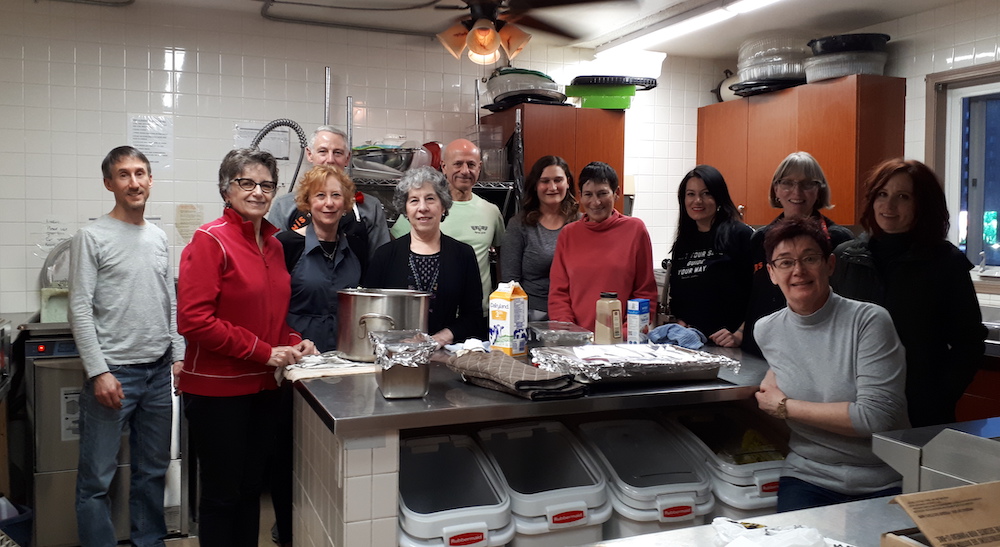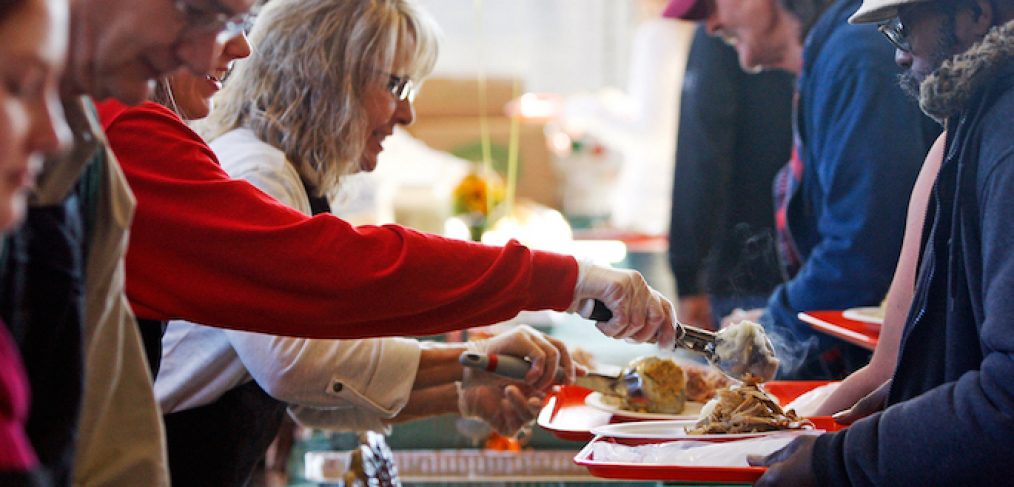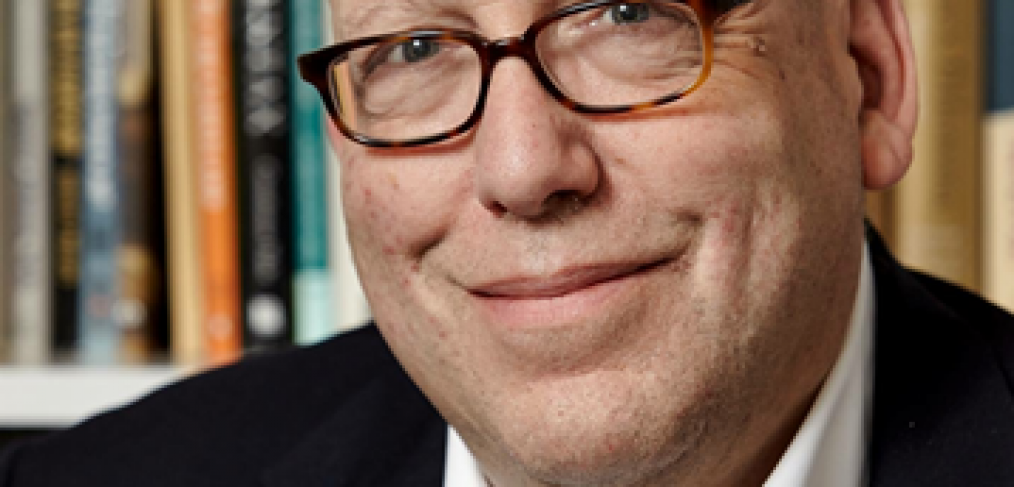What an amazing group of volunteers. Preparing and serving TWO Christmas meals in one day!
Thanks for all your support!

=====================
Bring your recipes and your energy to dinner on December 25th!
This year, Temple B’nai Tikvah will be providing Christmas meals to two different groups of people:
1. Awo Taan Healing Lodge
This is a First Nations Women’s Shelter located in a central southwest Calgary. We need 10-12 volunteers to prepare and serve dinner at the Lodge on Christmas Day. If you’re interested, please contact Nadine Waldman via the office.
2. Murray’s House
Run by the Sharp Foundation, Murray’s House is a 23 unit apartment building that provides a residence with full support services for the chronically homeless. Meal preparation will be at Temple and then served at the building. We will need about 12 volunteers, men or women. If you’re interested, please contact Paul Leney via the office.


